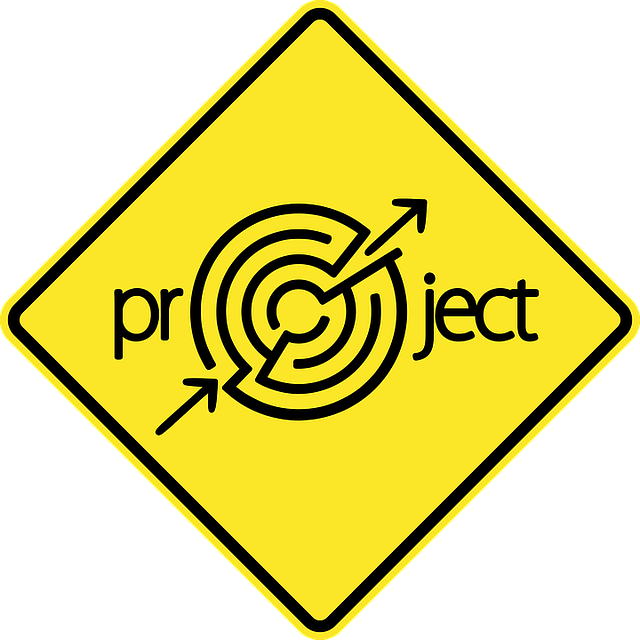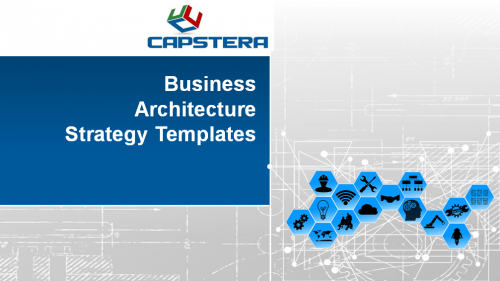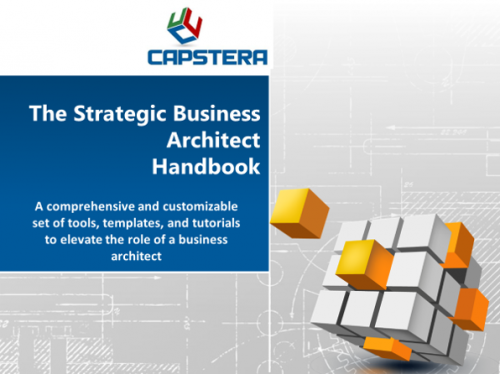
Introduction to Capability-based Project Prioritization and Planning
A strategic edge is invaluable in the swiftly evolving world of contemporary business. Yet, while technology, market trends, and customer preferences continually change, one thing remains constant – the need for effective project prioritization. When resources are limited, and business needs abound, decision-making around which initiatives to undertake and when can often be a significant challenge.
Enter the role of business capabilities. Capabilities serve as the fundamental building blocks of an organization – the unique blend of processes, resources, and strategies that enables a business to deliver value to its customers. By understanding and leveraging these capabilities, companies can navigate the complex landscape of project prioritization with greater confidence and strategic insight.
Adopting a capabilities-based approach to project prioritization transforms an often subjective and disjointed process into an objective, strategic exercise. Instead of being driven by immediate needs or individual preferences, decisions are informed by a clear understanding of the organization’s unique strengths and the value different projects can deliver in enhancing these capabilities. In essence, this approach aligns project prioritization with the organization’s strategic objectives.
This guide serves as a comprehensive manual on capabilities-based project prioritization. Starting with a deep dive into understanding business capabilities, the guide progresses into the nuanced process of capability mapping, the critical step of linking projects to capabilities, and finally, the art of project prioritization based on these capabilities.
Each section will provide you with a detailed understanding of the specific steps involved, supplemented with practical tools, examples, and case studies that illuminate the principles in real-world contexts. Whether you are a project manager, a strategic planner, a business executive, or an entrepreneur, this guide will equip you with the knowledge and skills to use business capabilities as a solid foundation for project prioritization.
By the end of this guide, you will understand the theoretical aspects of this approach and be empowered to implement it in your organization. The journey of project prioritization will no longer seem daunting. Still, it will instead become a strategic process that enables you to consistently make informed decisions, drive value creation, and ultimately, achieve your organization’s goals. So, let’s embark on this journey and unlock the power of capabilities-based project prioritization.
-

Business Architecture Strategy Templates
-

Business Capability Roadmap Examples
Understanding Business Capabilities
A business is a complex system of interconnected parts, from people, processes, and technologies to strategies, goals, and visions. But, to navigate this complexity effectively, we must first understand the fundamental concept of business capabilities.
Business capabilities can be broadly defined as the unique combination of resources, skills, processes, and technologies a business possesses or can utilize to execute its strategies and deliver value to its customers. These capabilities are essentially what a company does or has the potential to do, cutting across departments, processes, and hierarchies. They are the building blocks of a business, serving as the foundation upon which a company builds its products or services, competes in its markets, and ultimately achieves its strategic objectives.
Understanding business capabilities is critical because it allows you to see your business from a unique perspective. Instead of viewing your organization as a collection of distinct departments or functions, you see it as a set of interrelated capabilities that create your business’s unique value proposition. This shift in perspective is powerful as it can help you identify where you should focus your resources and how you can better align your projects with your business’s strategic objectives.
Let’s delve deeper into the concept of business capabilities by breaking it down into its core components:
- Resources: Resources are a business’s tangible and intangible assets. This includes everything from physical assets like machinery and buildings, financial assets like capital and cash flow, to human assets like employees’ skills and experience.
- Skills: Skills refer to the specific abilities that your employees possess that allow your business to perform its functions. They can be technical skills like programming or financial analysis or softer skills like communication, leadership, or problem-solving.
- Processes: Business processes are the steps or tasks your business undertakes to deliver its products or services. They can be operational processes, like manufacturing or customer service, or management processes, like strategic planning or budgeting.
- Technologies: Technology plays a crucial role in the modern business landscape. The technologies you use, whether your CRM system, manufacturing equipment, or digital marketing platforms, are integral to your business capabilities.
By identifying and understanding your business capabilities, you’ll be better positioned to decide where to focus your resources and efforts strategically. This knowledge will also inform your project prioritization process, as you’ll have a clearer understanding of how each project aligns with and supports your capabilities.
-

Business Architecture Strategy Templates
-

Business Capability Roadmap Examples
Capability Mapping
As we delve further into business capabilities, we encounter the vital process of capability mapping. This strategic exercise involves structuring and visualizing your business capabilities to enhance your understanding of your organization’s value delivery system. By breaking down your business capabilities, you can create a detailed map that illuminates your business’s paths to achieve its goals. Let’s dissect the steps of this process.
Identifying High-Level Value Chain Capabilities
The first step in capability mapping is identifying your high-level value chain capabilities. A value chain is a business’s sequence of activities to deliver a valuable product or service to its customers. This can be considered a high-level view of your business from a capabilities perspective.
At this stage, the focus is on identifying the essential, broad capabilities that create and drive value within your organization. You’re looking for those critical 10-12 capabilities that define your business, such as supply chain management, product development, customer service, marketing, or sales.
Decomposing Capabilities
Once you have identified your high-level capabilities, the next step is to decompose these into more detailed, granular capabilities. This involves breaking each high-level capability down into its constituent parts. For example, the high-level capability of “product development” might be decomposed into more specific capabilities such as “design,” “prototyping,” “testing,” and “manufacturing.”
The depth of decomposition will depend on the size and complexity of your business. In general, you should aim for at least three decomposition levels, but it may be beneficial to go down to level four or five for larger or more complex organizations.
Categorizing Capabilities
Once the capabilities have been decomposed, the next step is categorization. A simple and effective way to categorize capabilities is into three groups: Core, Context, and Commodity.
- Core capabilities are those that differentiate your business in the marketplace. They are what make you unique and provide a competitive edge.
- Context capabilities are essential for your business operations but don’t differentiate you in the marketplace. However, these are capabilities that all businesses in your industry likely have.
- Commodity capabilities are those that are necessary but not strategically important. These might include standard administrative functions like payroll or IT support.
The guiding principle here is to invest in your core capabilities, standardize your context capabilities, and consider outsourcing commodity capabilities if it’s more cost-effective.
Stack Ranking Capabilities
The final step in the capability mapping process is to stack rank your capabilities based on various factors. This involves assessing each capability in terms of its importance to the organization, ability to meet business needs, maturity, and architectural fit within the organization.
The objective is to create a prioritized list of capabilities that help guide strategic decisions. In addition, this ranking will inform your project prioritization, as projects that align with high-ranking capabilities will likely be deemed more valuable to your organization.
Capability mapping is a powerful tool for understanding the essence of your business. It clarifies your organization’s complex, interconnected web of activities and provides a basis for strategic decision-making. The following section will explore how to link your mapped capabilities to your projects, bringing us one step closer to effective capabilities-based project prioritization.
-

Business Architecture Strategy Templates
-

Business Capability Roadmap Examples
Linking Projects to Capabilities
Having mapped your business capabilities, the next crucial step in capabilities-based project prioritization is linking these capabilities to your projects. This exercise allows you to visualize the relationship between the projects you undertake and the capabilities they influence. Again, it’s about understanding how each project interacts with, supports, and enhances your business capabilities.
Decomposing Projects into Capabilities
Linking projects to capabilities begins by decomposing your projects into the underlying capabilities. Consider each project a unique entity designed to enhance, develop, or leverage one or several business capabilities.
For instance, a project aimed at improving customer service might involve capabilities such as customer relationship management, customer data analysis, and complaint resolution. Similarly, a project focused on developing a new product might be linked with capabilities like product design, market research, and manufacturing.
This decomposition helps comprehend how your projects map to your capabilities, similar to building a structure with Lego blocks. Each capability represents a block, and each project represents an arrangement of these blocks designed to create something of value.
Identifying Overlaps, Conflicts, and Redundancies
Linking projects to capabilities also enables you to identify overlaps, conflicts, and redundancies among your projects. For instance, if two projects enhance the same capability, an overlap could lead to duplicative efforts. On the other hand, conflicts may arise when two projects involving the same capability have different, opposing objectives.
Understanding these overlaps and conflicts is crucial as it allows you to optimize your project portfolio, avoid unnecessary duplication of efforts, and ensure that all your projects align with your strategic goals.
Aligning Projects and Capabilities
The ultimate goal of linking projects to capabilities is to ensure alignment between what your projects aim to achieve and the capabilities you need to enhance to meet your business objectives. When this alignment is strong, your projects are more likely to succeed, deliver value, and contribute positively to your business.
By linking your projects to your capabilities, you ensure that your project portfolio is directly tied to the strategic direction of your organization. As a result, you’re not just undertaking projects because they seem like good ideas but because they align with, support, and enhance your business capabilities.
In essence, linking projects to capabilities connect the tactical (the projects) and the strategic (the capabilities). It ensures that every project you undertake contributes to the broader strategic goals of your business, enhancing your chances of success in a competitive marketplace.
The following section will delve deeper into the project prioritization process based on these linked capabilities. Then, we will explore how to value-rank your projects based on the value dimensions of the capabilities they impact and additional holistic parameters. This will guide you towards more strategic, value-driven project prioritization.
-

Business Architecture Strategy Templates
-

Business Capability Roadmap Examples
Project Prioritization
Building on mapping and linking your business capabilities to your projects, we now enter the stage of project prioritization. This process involves evaluating and ordering your projects based on their strategic importance to your business, particularly as it relates to the underlying business capabilities that each project impacts.
Value-Ranking Projects
The primary tool in this step is value-ranking, which means assigning value scores to each of your projects based on the specific capabilities they influence. This process can help determine the most important projects for your organization’s success.
Consider the value of each underlying capability in terms of its importance to the organization, ability to meet business needs, innovation, competitive differentiation potential, and potential revenue impact. Projects linked to high-value capabilities—those crucial to your business’s success—should typically rank higher.
Beyond the value dimensions of the underlying capabilities, it may be beneficial to consider additional holistic parameters. These might include factors such as the feasibility of the project, the resources required, alignment with strategic objectives, potential risks, or the expected return on investment. All these factors together will give you a more comprehensive understanding of a project’s value to your organization.
Justifying Project Investments
In prioritizing your projects, evaluating the justification for investing in each is also essential. For example, projects focused on necessary but not strategically important commodity capabilities may not justify the significant investment. You might even consider outsourcing these projects or finding ways to execute them more cost-effectively.
On the other hand, projects focused on core capabilities—those that provide your business with a competitive edge—may justify substantial investment. Because these capabilities differentiate your business in the marketplace, enhancing them can lead to significant strategic benefits.
It’s important to note that while this approach encourages investment in projects linked to core capabilities, it does not suggest ignoring those tied to context or commodity capabilities. “Keeping the lights on” projects are still vital for the organization. The key is balancing your project portfolio to ensure you’re investing appropriately across all capabilities.
Strategic Project Prioritization
Ultimately, this process aims to create a prioritized list of projects that aligns with your business’s strategic objectives. By ranking your projects based on the value of the underlying capabilities and other holistic parameters, you can make informed decisions about which projects to pursue and which to delay or potentially eliminate. This strategic approach to project prioritization can help ensure that your project portfolio delivers maximum value to your organization.
In the next section, we will look at how to create a portfolio view of your projects. This will give you a high-level perspective on your project portfolio, enhancing your capabilities-based project prioritization.
-

Business Architecture Strategy Templates
-

Business Capability Roadmap Examples
Creating a Portfolio View
Taking a project-by-project approach can offer valuable insights into the value and importance of individual initiatives. However, to effectively manage and prioritize a multitude of projects, it is essential to adopt a portfolio view. This holistic perspective allows you to evaluate your projects collectively, balancing their interdependencies, potential synergies, and collective impact on your business capabilities.
Benefits of a Portfolio View
By looking at your projects as a portfolio, you can better comprehend the larger picture of where your resources are going, what capabilities you’re investing in, and what value you’re driving for your business. A portfolio view provides insights into spending allocation, highlighting how much is being spent on maintaining existing capabilities (“keeping the lights on”), improving standard operations (“business as usual”), and developing innovative, value-driving initiatives (“competitive leapfrogging”).
Managing Resource Constraints and Conflicts
A portfolio view allows you to manage resource constraints and conflicts more effectively. By looking at your projects collectively, you can identify where resources might be stretched thin or where there might be duplication of effort across projects. This lens allows for a more efficient allocation of resources and ensures that the right capabilities are being utilized for each project, leading to an overall increase in efficiency and productivity.
Standardizing Capabilities
Another advantage of a portfolio view is identifying what capabilities are frequently utilized across multiple projects. This can indicate a standard set of capabilities central to your business operations. By recognizing these, you can standardize processes, systems, and resources related to these capabilities, leading to improved efficiency, reduced costs, and more streamlined operations.
Analyzing Spending and Value Creation
Furthermore, a portfolio view provides a platform to analyze spending against value creation. This analysis can help you identify whether your current project investments align with the strategic importance of the capabilities they are intended to enhance or develop. If you spend disproportionate resources on low-value capabilities, a portfolio view will highlight this imbalance, allowing you to reassess and recalibrate your project investments.
Creating a portfolio view of your projects is a strategic step in capabilities-based project prioritization. It offers a holistic perspective of your project landscape, enabling you to make more informed, strategic decisions about project initiation, prioritization, and resource allocation.
-

Business Architecture Strategy Templates
-

Business Capability Roadmap Examples
Measuring Project Results
The final yet crucial stage in the capabilities-based project prioritization process is measuring project results. After careful mapping, linking, and prioritizing your projects, the attention shifts to assessing their impact on your business capabilities. This process offers vital insights for continuous learning, performance improvement, and strategic refinement.
Defining Key Performance Indicators and Success Metrics
The first step in measuring project results is defining key performance indicators (KPIs) and success metrics. These are the standards against which you will evaluate the success of your projects and their impact on the underlying capabilities.
KPIs could include factors such as the improved performance of a capability, the increased efficiency of a process, or the enhanced effectiveness of a system. Success metrics, on the other hand, might include tangible outcomes such as increased revenue, improved customer satisfaction, or reduced operational costs.
Measuring Impact on Underlying Capabilities
Once your KPIs and success metrics are established, the next step is to measure the impact of your completed projects on the underlying capabilities. This involves assessing how each project has influenced the performance, maturity, and strategic value of the capabilities it was linked to.
For instance, if a project was aimed at enhancing your customer service capability, you might measure its impact in terms of improved customer satisfaction scores, reduced customer complaints, or increased customer loyalty.
Learning from Project Outcomes
Measuring project results allows you to evaluate individual projects’ success and provides invaluable insights that can inform your future project management practices and capability development strategies.
By assessing what went well and what did not, you can learn valuable lessons about project execution, capability enhancement, and value creation. These insights can help refine your project prioritization process, improve project management practices, and enhance your strategic focus on capability development.
Measuring project results also provides an opportunity to celebrate successes, recognize your team’s efforts, and reinforce the value of a capabilities-based approach to project prioritization.
Measuring project results is a crucial part of the capabilities-based project prioritization process. It provides a feedback loop that drives continuous improvement, enhances strategic alignment, and ensures that your project investments deliver the intended value for your business. This brings us to the end of our journey through capabilities-based project prioritization. Armed with these insights and tools, you are now better equipped to navigate the complex landscape of project management and drive strategic value for your business through a focused, capabilities-based approach.
Concluding Thoughts on Capability-based Project Prioritization and Planning
As we come to the end of our journey through the process of capabilities-based project prioritization, it is clear that this approach offers a robust, strategic framework for project management and decision-making in the complex world of modern business. By focusing on your business capabilities—those unique attributes and abilities that drive value for your organization—you can more effectively prioritize your projects, align your resources, and steer your enterprise toward its strategic goals.
Harnessing the Power of Business Capabilities
Understanding your business capabilities is not just an exercise in abstraction. Instead, it provides a clear, tangible foundation for building and growing your enterprise. These capabilities are the building blocks of your organization, the engines that drive your value proposition, and the unique elements that distinguish you in the marketplace.
By mapping your capabilities, linking them to your projects, and using them as a basis for project prioritization, you ensure that your efforts and resources are directed toward the areas of your business that truly matter. This capabilities-focused approach promotes strategic alignment, increases efficiency, and fosters a culture of continuous improvement.
Navigating the Path to Success
Implementing a capabilities-based approach to project prioritization is not a one-off event. Instead, it is an ongoing journey of discovery and refinement. It requires a commitment to understanding your business capabilities, a willingness to adapt and change, and a determination to make data-driven decisions.
Yet, the rewards can be substantial. Greater efficiency in project execution, a clear strategic focus, enhanced alignment between projects and business strategy, and improved business performance. By prioritizing projects based on their impact on your business capabilities, you ensure that every project contributes to the growth and success of your organization.
The Journey Ahead
As you continue your journey, remember that capabilities-based project prioritization is dynamic. Your business capabilities will evolve over time, and so should your project prioritization approach. Therefore, regularly review and update your capabilities map, reassess your project priorities, and measure the results of your completed projects to ensure that your efforts continue to drive value for your business.
In conclusion, a capabilities-based approach to project prioritization offers a powerful tool for navigating the complexities of modern business. It’s an investment in understanding your business deeper and leveraging your unique capabilities to drive growth and success. So, as you move forward, keep your capabilities at the forefront, use them as the compass guiding your project decisions, and let them lead you on the path to success.
-

Business Architecture Strategy Templates
-

Business Capability Roadmap Examples




